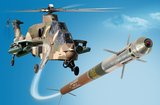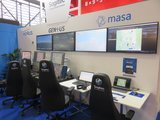The uncrewed ground vehicle (UGV) market is evolving rapidly, driven by technological advancements, geopolitical shifts, and changing defence priorities.
The UGV market is experiencing significant technological growth, particularly in areas such as autonomy, remote control, and electrification. These advancements are transforming UGVs from simple resupply vehicles to sophisticated systems capable of various military applications.
In our recent webinar, ‘The Future of European Defence: Insights and Strategies Ahead of Eurosatory 2024’, the rapid pace of UGV innovation was one of the core themes of our conversation.
The conflict in Ukraine has had a profound effect on the defence industry.






















